Tecmo’s Captain Tsubasa Series: A Creative Way To Adapt a Manga
An early example of sports-meets-strategy RPG
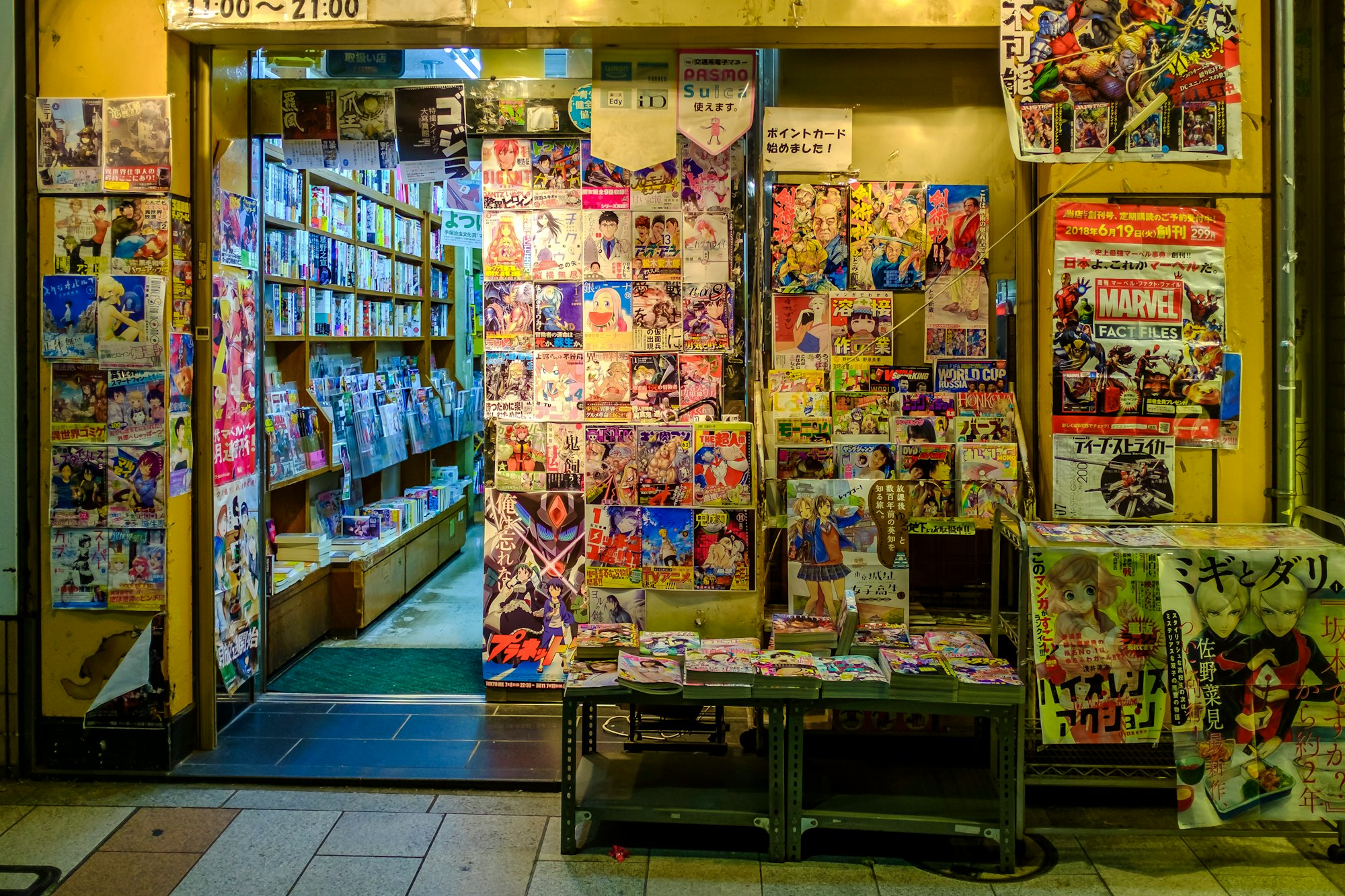
Since the dawn of the Japanese gaming industry, we could always find games based on manga properties. From the NES to the PS5, many famous anime and manga were adapted to the video game world.
For a while now, anime adaptations have typically had a few points of commonality. They are published by Bandai Namco, with most being relegated to arena fighting games, and they always try to adapt the feel of the original work without losing the feeling of it being an actual game.
Thanks to the technology and hardware we have today, it’s mostly easy to turn a successful show into a game that respects the original material. But in the '80s and '90s, it wasn't that easy. In the earlier days of the console market, developers had to be creative when adapting successful anime into games, thanks to the limitations of the time.
One of these developers was Tecmo, famous in the arcade and NES for its thrilling Ninja Gaiden series. The Japanese developer took charge of adapting one of the first successful football-based manga to the limited hardware of the Famicom system. With all the challenges and hardships that could come, Tecmo delivered an intriguing series of games that not only caught the attention of fans with its gameplay style but also influenced the original manga itself.
Inspired by Japan's run in the FIFA World Cup Qatar 2022, let me introduce our readers to Captain Tsubasa and its fun and creative series of games from the Famicom and Super Famicom eras. Mixing football with RPG elements, this series of games might not be the best of either, but it certainly shows how creative developers had to be when adapting other media into gaming.
Captain Tsubasa: The manga that made a generation love football
Football, or as our friends from the US like to call it, soccer, is the most popular sport in the world. With 3.5 billion fans, the sport is a massive success and has generated uncountable pieces of media, such as TV shows, documentaries, cartoons, and manga.
Younger readers may know Blue Lock and Inazuma Eleven, two of the most recent famous manga based on the sport. If you never read or watched anime, you've certainly read about or heard people commenting on them when talking about sports anime. The 2022 World Cup, which is happening right now in Qatar as of this text, has made people remember both series thanks to the amazing run enjoyed by Japan's national team.
For an old generation, however, it’s another franchise about football that is fondly remembered. Those of us in South America or even some European countries such as Spain and France will always remember Captain Tsubasa's determination and will to never give up.
Captain Tsubasa was created in 1981 by Yoichi Takahashi. Being a huge fan of sports, especially football, Takahashi started his manga after watching the World Cup 1978 that happened in Argentina. Impressed by the action he saw on television, Takahashi was inspired to replicate that feeling and introduce an entire generation of Japanese kids to the beautiful game.

The series follows Tsubasa Oozora, a young kid from Japan who dreams of one day winning the World Cup. Starting the series during Tsubasa's years in elementary school and advancing till his departure to play professionally in Brazil, the series served as a way to introduce football to the country while teaching important lessons like teamwork. The success of the manga resulted in an anime adaptation in 1983 that lasted till 1986. The manga ended in 1988 and cemented the series' place as one of the stars of Shonen Jump, a weekly manga anthology in Japan.
Although it was a manga that tried to keep it real and down to earth, the influences of the shonen genre are present in the work. Some acts are amazing, like feints and plays that are unrealistic. Most characters also have a special technique that is over the top, like Tsubasa's Drive Shoot, which makes the ball fly up in the air and descend quickly into the goal, or Hyuga's Tiger Shoot, a strong kick that manages to break even a wall.
Right when the manga was coming to a close, Tecmo released Captain Tsubasa for the Famicom. With a difficult mission to adapt what was a sports manga into a videogame that could resemble the original work, the Japanese developer sought to follow in the steps of the anime, bringing all the emotion and over-the-top scenes to the 8-bit console.
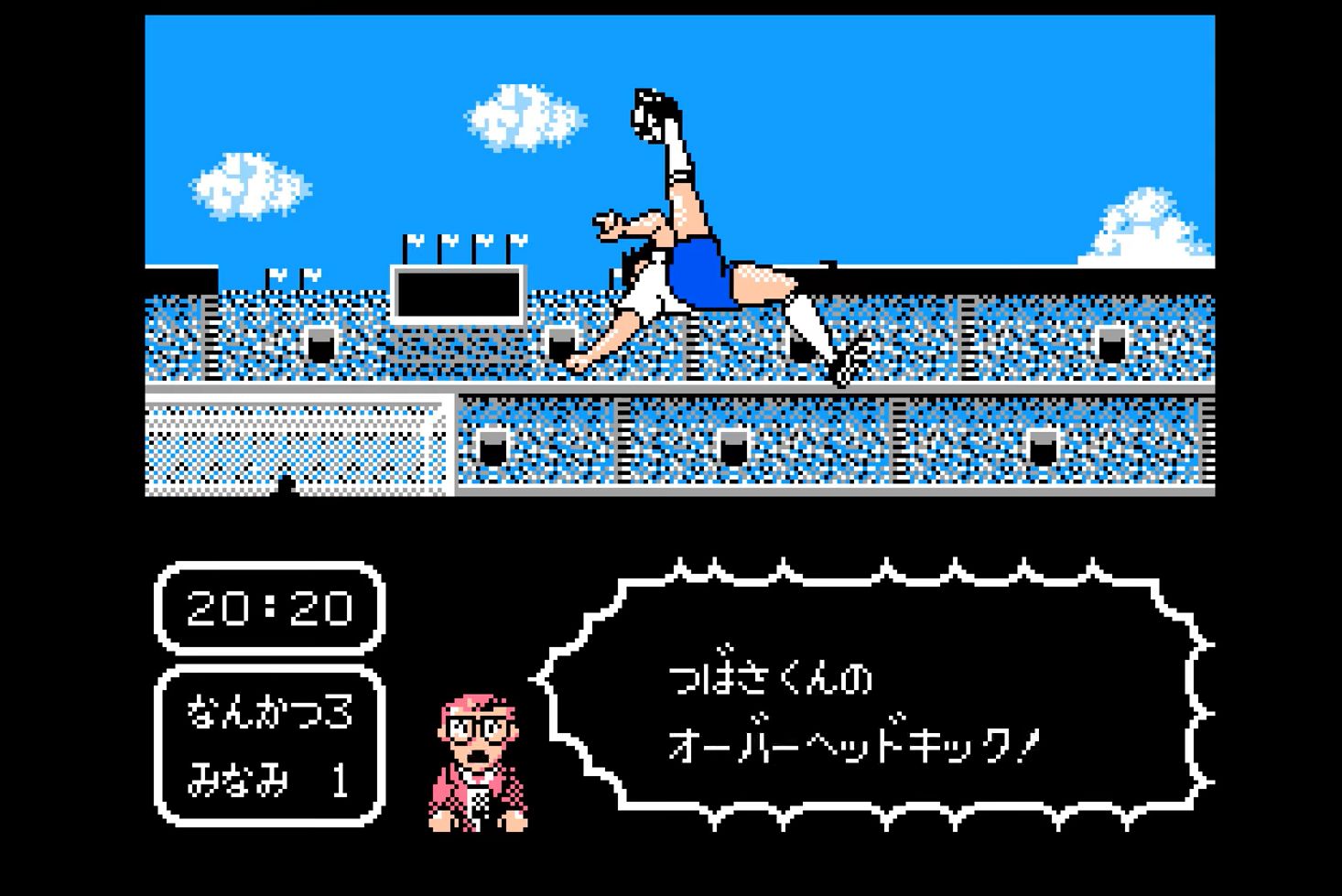
Tecmo's creative adaptation, the birth of the soccer RPG cinematic experience
Adapting a piece of work from one medium to another is always a difficult thing to do. Concessions will always happen to guarantee that the adaptation can work just fine in the new medium. A good example would be crafting a book into a movie, where a good chunk of content is usually cut down or altered to fit inside the duration of a movie and utilize the techniques and advantages of the new medium to its fullest.
When a manga is adapted to an animation format, many things are changed and even added to make it work. Anime episodes usually cover multiple chapters from a manga, and because of the small number of pages, the team behind the adaptation creates actions to fill in the gaps and to help make the action feel more natural.
When it came to adapting the manga to television, Tsuchida Studio, responsible for the anime, made some intriguing decisions to make things more enjoyable to watch. The Captain Tsubasa anime was well known for its ridiculous over-the-top scenes, such as players flying away after a hard tackle, the pitch being extra long to represent the scenes where players monologue, and many camera effects to emphasize passes and shots.
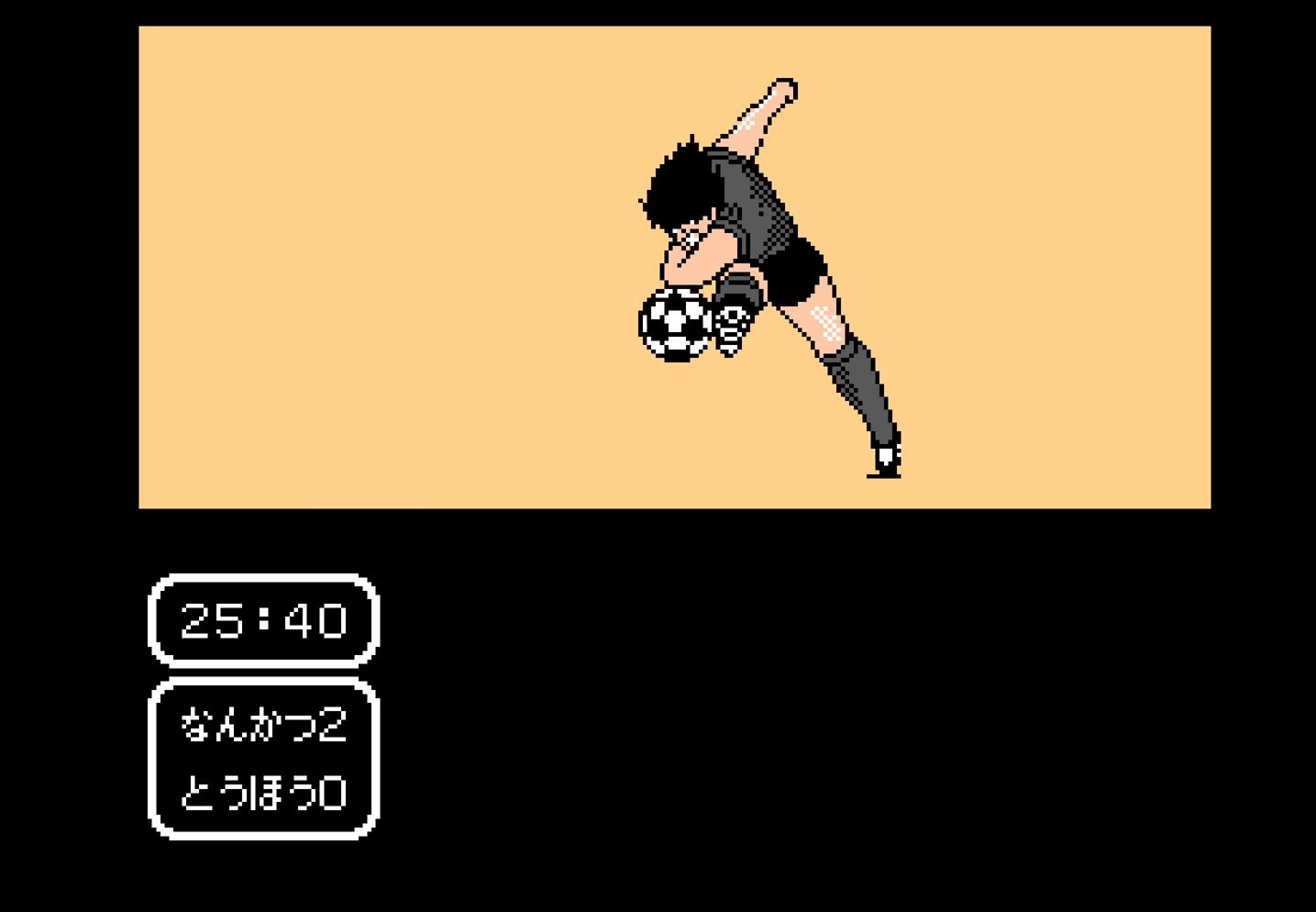
Tecmo followed in the anime footsteps and brought all the action seen in the animation to game form. To best represent what was seen on television, the developer made the Captain Tsubasa game a sports/strategy RPG and cinematic action game, a unique genre created specifically for this title.
Football games in the '80s were a rare thing. Before the days of FIFA and PES, developers had trouble trying to adapt the sport to the virtual screen in a way that could entertain fans. Tecmo had a problem on their hands. How could they make a fun and entertaining game that would bring the unique presentation of the Captain Tsubasa anime to the Famicom? To answer that, the studio decided to combine the decision-making of RPGs with a more cinematic feel that would show the action unfold as the player decides what would be their next course of action.
The screen was divided in half, the top showing the player and the bottom having information about the match and the pitch. One button push opened a menu that offered options such as pass and shoot. Wherever an action was chosen, a cinematic would play, showing a long pass or the player kicking the ball to score a goal. Camera effects were also added to simulate the same style of animation seen in the anime.
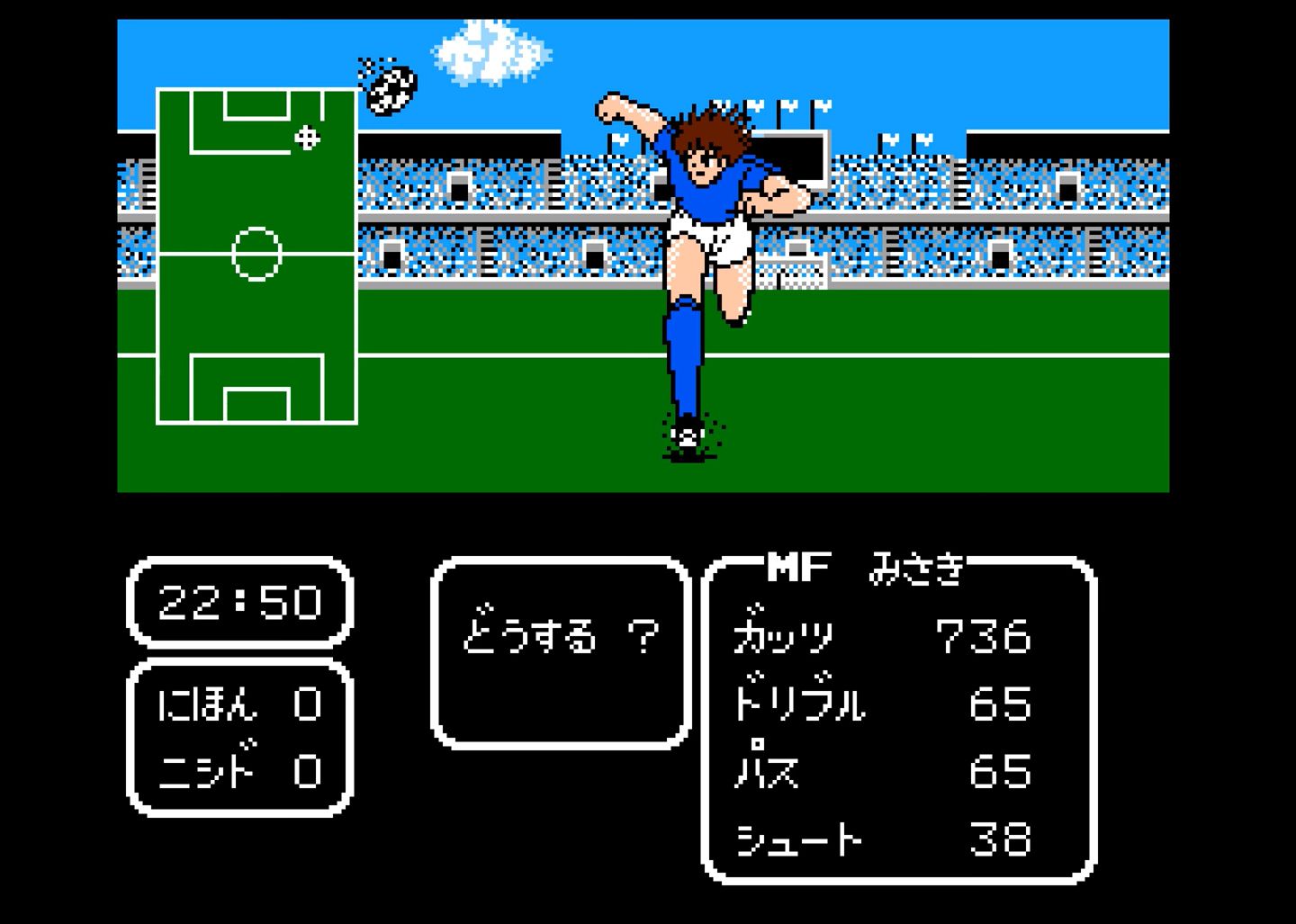
The RPG parts were present in each match, with your squad being similar to the party members in other JRPGs. Each player had a status that could improve after matches, and every time a clash of players happened on the field, it was necessary to choose an action. The strategy part was vital to these duels, as each player had a limited number of actions that could be taken. It was also necessary to know when to pass the ball or face off against opponents, adding a layer of strategy to the proceedings.
Of course, there were problems regarding this cinematic feel. Limited cutscenes meant that the same animation was played multiple times. Passes were always long, and goalkeepers always jumped in the same direction. The games were also very difficult, often making players face teams way stronger than their own squad. Even with all that, the first Captain Tsubasa game was a big success, and Tecmo continued to make more, improving the faults of the first game with its sequels.
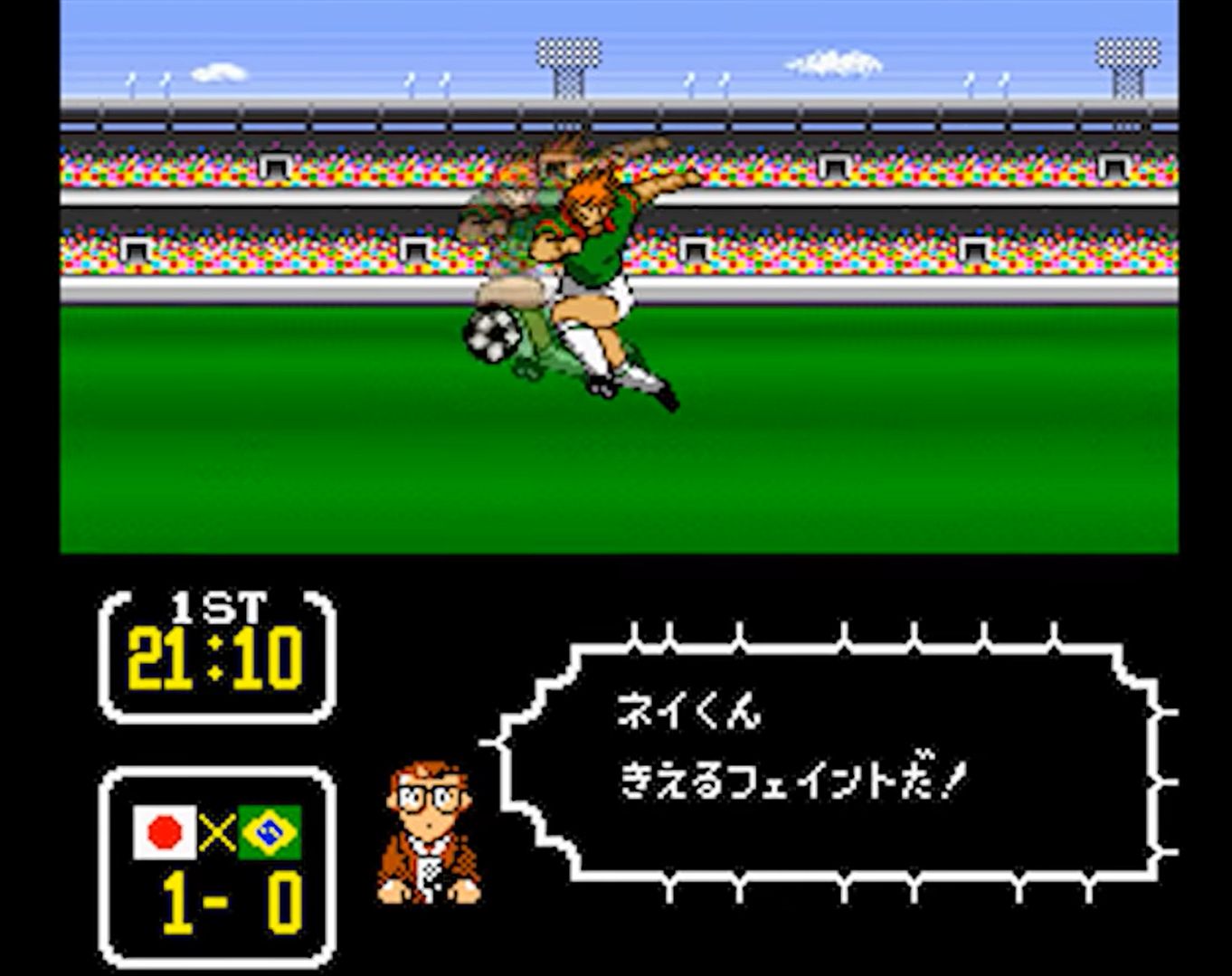
The tables turn; the game influences the original material
When creating a game based on a famous property, it is common for developers to create characters, lore, and even new events to guarantee that players will have something to do. Some of these new creations end up being so popular with the fans that they are referenced or even incorporated into the original work.
Starting from the second game, Captain Tsubasa II: Super Striker, Tecmo created its own set of events. However, instead of doing all on their own, the studio worked with the series creator, Takahashi, to create something that would honor the legacy of its original series.
The ending of the Captain Tsubasa manga saw Tsubasa departing to Brazil to become a pro player in the Brazilian league. Seeing this as an ending to the manga, Tecmo only knew that Tsubasa would play for Sao Paulo FC.
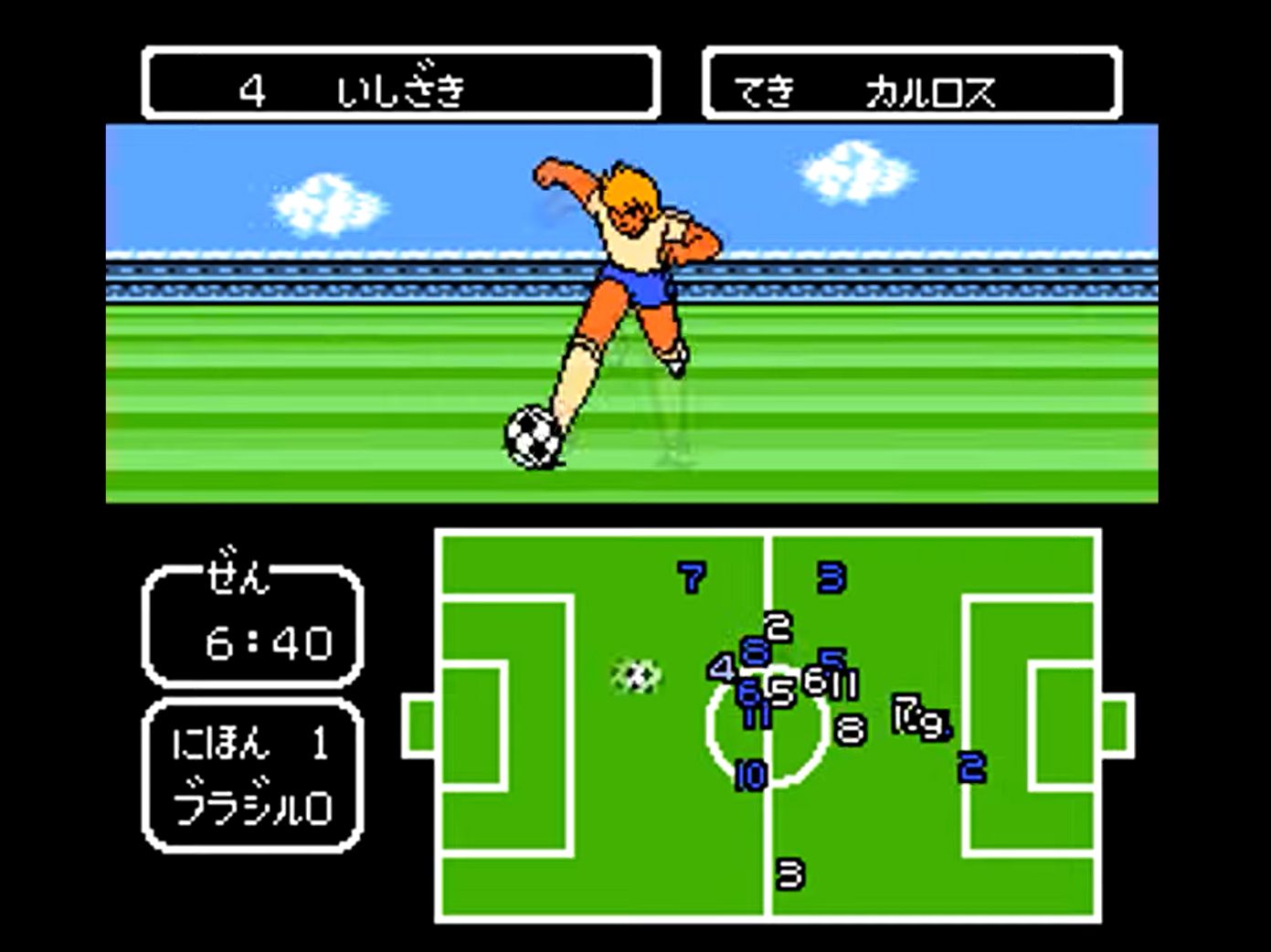
Using that as a starting point, the second game, released in 1990, set up for Tsubasa's adventures in Brazil, playing for Sao Paulo Youth. The narrative introduced many new rivals for Tsubasa, such as Carlos Santana, a skilled Brazilian forward. The game ended with Japan Youth coming to to participate in the World Youth Cup, a tournament with the best national teams, with your squad facing many strong opponents. The final opponent was Brazil Youth, a strong team that got even stronger after the second half of the match started, with the introduction of Arthur Coimbra, a secret number 10 that could turn the tide of the match in a second.
Captain Tsubasa II was a huge success becoming one of the most beloved titles in the Tecmo series. With the Super Famicom out, Tecmo moved the series to the new hardware and developed three other sequels. While introducing new elements to the narrative, the fifth and final game, Captain Tsubasa V: Hasha no Shogo Campione, made a big change in the lore. After playing for Sao Paulo for years, Tsubasa was ready to go to Europe. The destination chosen by Tecmo was Italia and its famed pro league Serie A, which at the time was considered the best league in the world.
While Takahashi worked closely with Tecmo, he was also trying to make his next big manga. After a couple of failures, and the upcoming World Cup 1994, Takahashi wanted to go back to his original work. He announced his return with a new series of manga chapters that were familiar to some fans of Captain Tsubasa II.
When the first chapters of Captain Tsubasa: World Youth Hen hit the shelves in 1994, fans felt deja-vu. Takahashi had made his own version of the World Youth Cup tournament arc, adapting characters made for the game into his narrative, while also creating new ones inspired by the ones in the game series. The final match of the manga, Japan Youth vs Brazil Youth, even saw the introduction of Natureza, a secret number 10 that appeared in the final minutes of the game and turned the tide of the match in a second.
Not only that, but the Tecmo games also influenced the future of the next series after World Youth Hen. Tsubasa announced his plans to move to Europe. However, instead of Italy, the Japanese Star would move to Barcelona in Spain.
Takahashi also brought some of the Tecmo lore into the manga, making some players move to the teams they played for in the game, while also using elements of its narrative, like Italian players being racist against Japanese players. In a way, future adaptations of Captain Tsubasa kept things Tecmo had created and developed years earlier as original canon material.
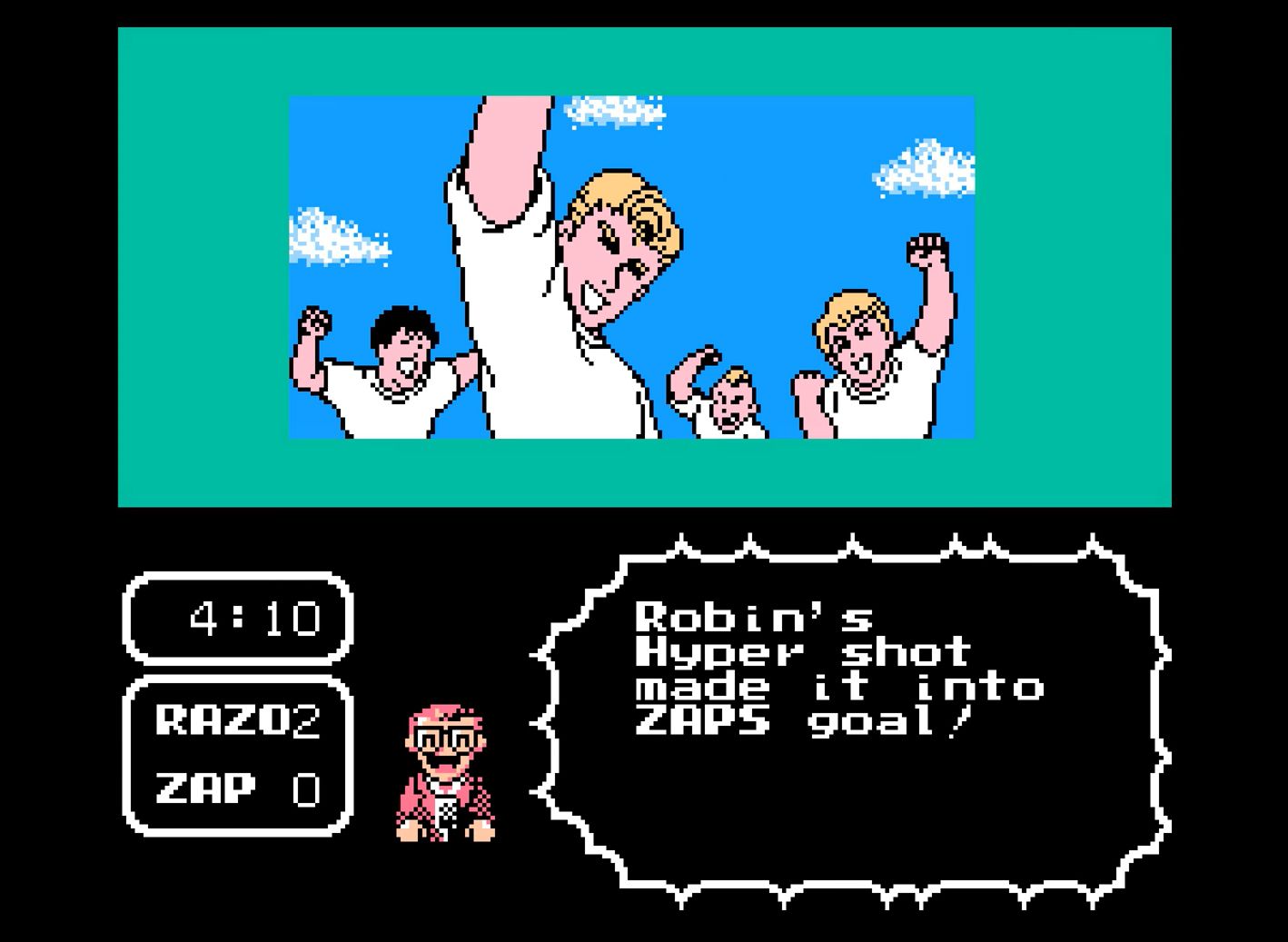
The "For-Kids" adaptation of Captain Tsubasa
Japan wasn't the only place to experience the sports/strategy RPG and cinematic action game genre. Western countries received, a few years later, the first game in the series, although in an unexpected way. Released by Tecmo in 1992, Tecmo Cup Soccer Game was a heavily adapted version of the first Captain Tsubasa game.
Keeping the gameplay and cinematic experience intact, the changes made to Tecmo Cup Soccer Game were more in relation to graphics and narrative. Removing all traces of the original series, the title is an Americanized version of the Japanese game, a "4Kids" version so to speak.
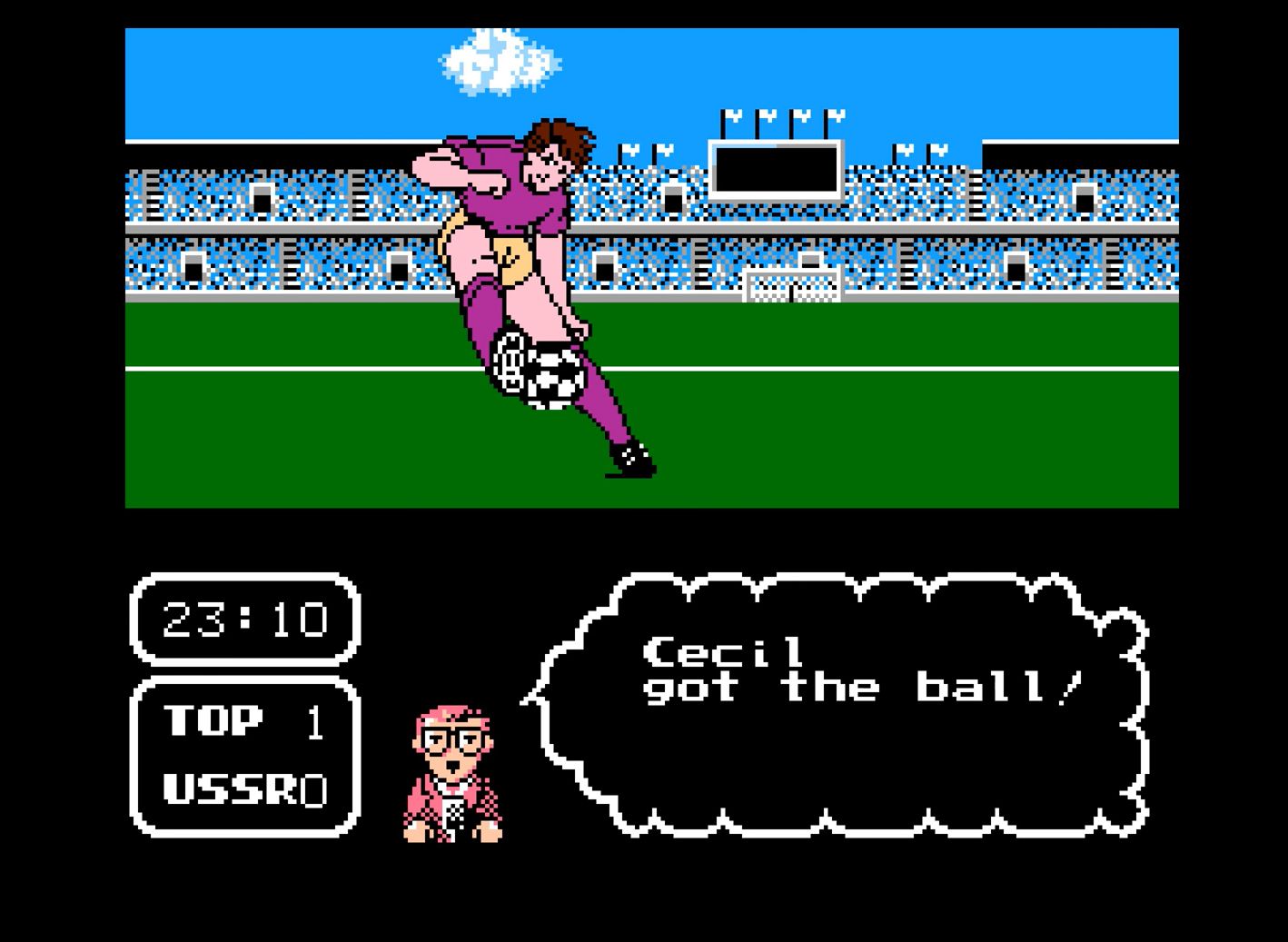
Tsubasa Oozora is out. In his place is the American Robin Field, a blonde teenager who is the son of a famous soccer star and dreams of becoming the best player in the world. Not only the characters were changed to be more westernized, but the story also suffered a few changes to be more suitable to western culture. The result was a weird game that felt like a cheap copy of something great.
The gameplay was also heavily criticized at the time by casual fans who thought they were getting a football game. Without the novelty of the original material, Tecmo Cup Soccer Game fell into obscurity, failing to reach the same success as its Japanese counterpart. A sequel was teased through the ending of this game, but its failure meant a stop to this plan.
Paving the way for the future of a manga
1994 marked the end of Tecmo's and Shueisha's partnership to produce and develop Captain Tsubasa's games. Since then, the series has received many other titles developed by Bandai Namco and Konami. Although each one of them would go for a different route, the influences of the Tecmo series would always be felt, as they tried to replicate the sports/strategy RPG and cinematic action game formula while making the games more action-heavy and less tedious for those who just want to enjoy some football.